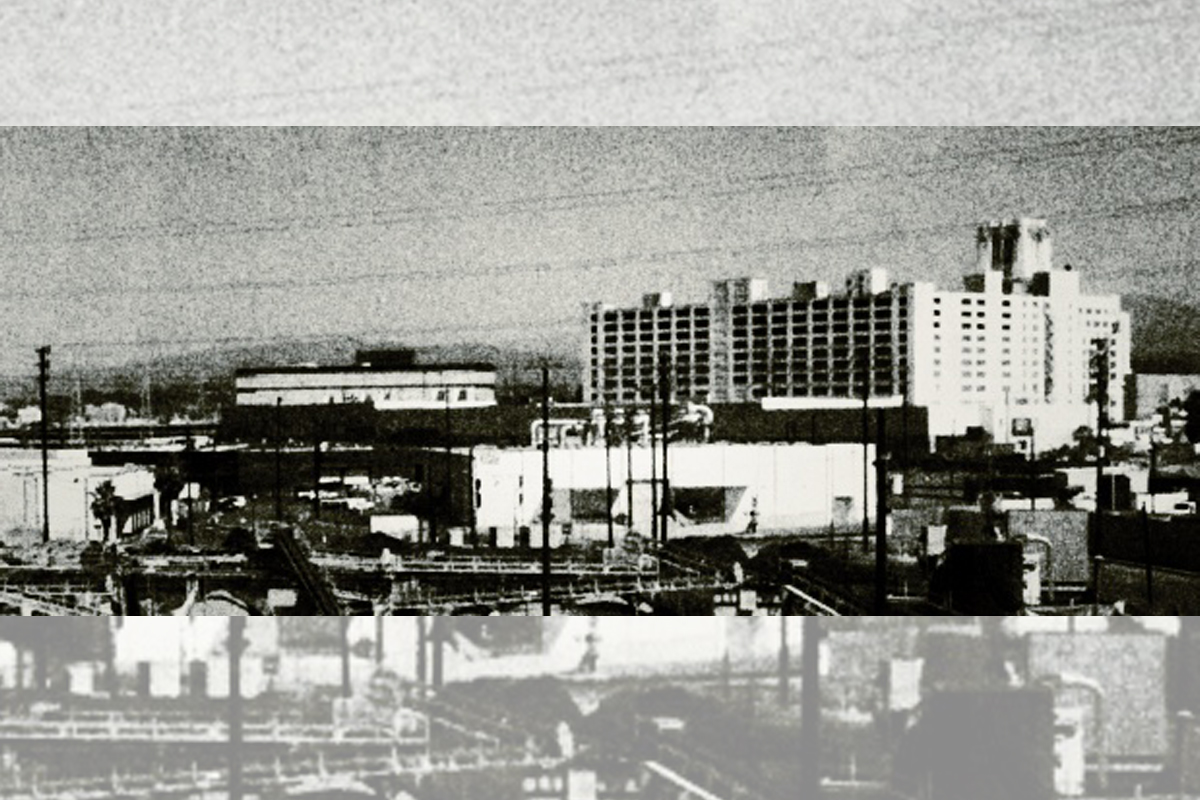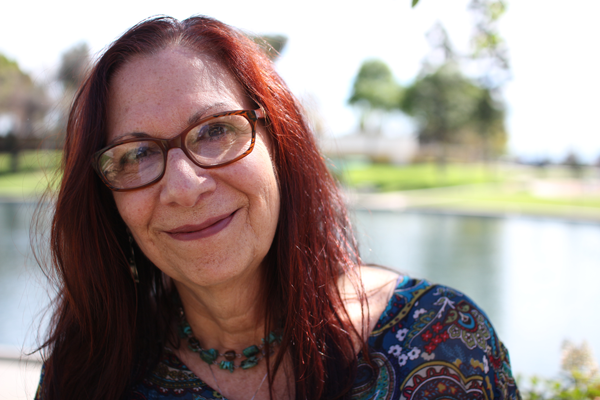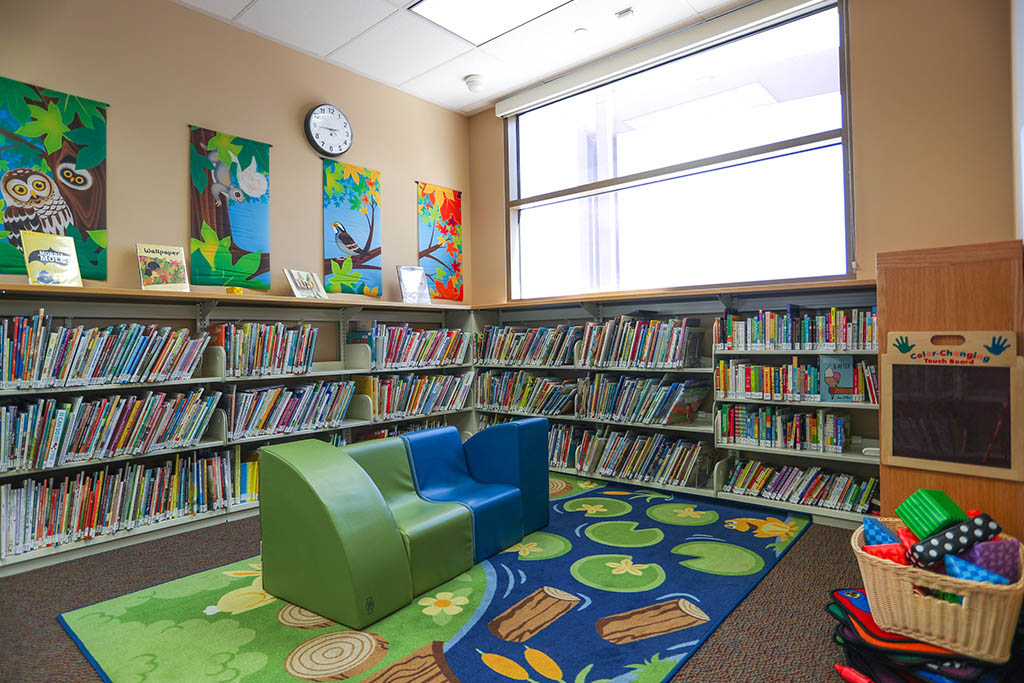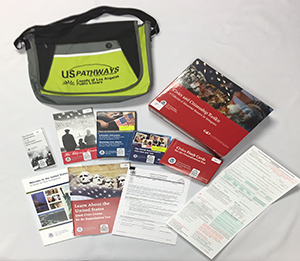Daryoush, VJ, Simón and Al

In 1984 I returned to L.A., my hometown, after being away for almost 17 years. With my 3-month old son Tomás in tow, I arrived from Mallorca, Spain with the clothes on my back, and a few battle scars from a tumultuous relationship with his father. I was ready for a new start, and the safety net of home and family.
I had grown up in the San Fernando Valley and never experienced much else of the city. During my teens, crossing into Laurel Canyon down into Hollywood was an adventure that mostly got me into trouble. I was always intrigued by the canyon where my favorite musicians, Joni Mitchell and David Crosby, lived. I never quite fit the Valley girl stereotype; instinct drove me elsewhere the first opportunity I had. I also remember being glued to the TV in 1965 watching the Watts riots unfold. It was hard to fathom it was taking place within my own city.
During the late 70s when I had returned from abroad to visit family, crime was up; L.A. appeared to be in lock down, reeling from the Charles Manson and Hillside Strangler murders. I feared having a flat tire on the freeway at night; worried a stranger might stop.
Now, after 17 years away, I was back in L.A. and needed a job. I had done some photography and sold ads for an English-language weekly newspaper on the island of Mallorca, so I walked into the Spanish-language daily newspaper, La Opinión, and asked for a job. They handed me a box full of old client files and a spot at an old clunky, gray metal desk in the sales department on 14th Street downtown, known as the “White House.” Named for its older, shabby brick building painted white, it was separated by an alleyway from the paper’s modern offices at the corner of 14th and Main. The sound of the press cranking out up to 80,000 newspapers every afternoon was an adrenaline rush. I ignored the mouse droppings in the desk drawers and got to work calling on inactive advertisers.
I called on clients throughout the small cities southeast of L.A. Old auto, rubber factories, and metal-bashing industries were now gone, as were the predominantly white, blue-collar residents. Latinos were recreating the landscape. Lining Pacific Boulevard were a Mexican Canada shoe store, a 3 Hermanos clothing store, a Gallo Giro fast food restaurant, and stores selling Western boots, jeans and cowboy hats, catering to the Mexican ranchera, banda and quebradita dance crazes of the day. I brought the advertising team from The Broadway Stores down for a walk so they could see the independent shops that catered to the outfits needed for a baptism, first communion or quinceañera. Within a 3-block radius along Pacific Blvd. we counted nine stores with elaborate Cinderella ball gowns displayed in their storefronts, catering to girls turning 15.
I was working for the Spanish-language daily that catered to the immigrants of the “lost decade” of Mexican economic stagnation, and Central Americans who were fleeing civil wars. My early clients were small business entrepreneurs. There were the Iranians who had fled the new Islamic Republic that came to power in 1979. Savvy entrepreneurs that they were, they set up shop in Hispanic neighborhoods, learned Spanish, and sold electronics, appliances and other household goods.
One of my first sales calls from the box of inactive clients was to Daryoush, a Jewish Iranian who owned Top Discount Stores in East L.A. and Echo Park. Balding and disheveled, he was a shrewd businessman. During our first meeting, he took me back to his messy cubbyhole of an office; I let him rant. He was upset at La Opinión for raising his column inch rate, which he felt was unfair given the number of consistent full-page ads he’d placed for years. Plus he was not happy with the rep that previously handled his account. His cantankerous mood was also due to his Echo Park location not doing well. The mostly off-brand appliances and electronics sold on layaway at Top Discount were ideal for blue-collar, newly arrived immigrant families, but had less appeal for a neighborhood starting to gentrify.
After rounds of negotiating, Top was back in the paper. I started looking forward to my weekly meetings with Daryoush. We’d sit in his office, go through the changes in his ad and sip tea – there was always a pot of Persian tea brewing – while exchanging border crossing stories and chatting about his life in Iran, how the revolution unfolded, and how they had underestimated Khomeini’s Islamist movement.
Daryoush came to the U.S. right before the revolution broke out, but his family waited. They hired guides, not unlike the coyotes that bring Mexicans into the U.S., paying hefty amounts to take them through the treacherous Kurdish mountain region from Iran into Turkey. Leaving everything behind except the few belongings they could carry, petrified, they escaped on foot and on horseback, knee deep in snow; his elderly parents barely survived. They eventually made it to Ankara, and onto Vienna, then reuniting with Daryoush and other relatives in L.A.
As Daryoush and I became friends over the years, I had the honor of meeting his parents. I was invited to a gathering held in their large apartment on Beverly Glen, south of Olympic Boulevard in West Los Angeles. I walked through the door and was immersed in the aromas of homemade Kosher Persian food, a meal that included classic Tabrizi meatball dishes, stews and kabobs, and Chelo Persian rice. Surrounded by ornate Louis XIV-style couches, tables and chandeliers, it dawned on me they had replicated their home environment from back in Iran. Melodic classic Persian music played in the background; nostalgia filled the air. This could have been a gathering in Tehran, not Los Angeles. As the night progressed, they switched to Persian pop music that fused the traditional tonbak finger snapping-style percussion with electric guitar and organ. When the music of the well-known queen of Iranian pop music, Googoosh, came on, the volume went up and everyone jumped up to dance, me included. Hard to believe the older generation had survived such a harrowing escape, their joie de vivre so contagious.
Then there was VJ, who was from India and had a business in the garment industry right around the corner from the White House. One of the many subcontractors in L.A.’s fashion district, he finished sewing party wear for women that would end up in department stores like The Broadway, Robinsons May and JCPenney. His wholesale showroom was full of racks of blue, red, turquoise, pink and black sequined dresses, skirts and tops; the type of glitz older Iranian and Armenian women would wear to weddings and formal gatherings. The showroom bustled with retailers, buyers and designers that came through, scrutinizing the merchandise, discussing price per piece, delivery deadlines, etc. I often came in while VJ was on the phone or dealing with a vendor or client; he would always introduce me. The warehouse behind his showroom housed roughly 20 workers, all Mexicans, their sewing machines a constant hum.
Once in his office, I saw the close resemblance VJ had to the yogi Paramahansa Yogananda, whose photo loomed large on the wall behind his desk. They shared the same sculpted facial features – eyes, a distinguished nose with wide nostrils, and chin dimple – and they both beamed the same mild and tender look of peace and compassion. Under the gentle gaze of his guru we chatted about his business, the results of his latest ad campaign, and meditation.
VJ was a successful businessman; he was optimistic and generous, and he incorporated his guru’s teachings into his business practice. Though a garment manufacturer, he appeared to treat his employees well. There was no overcrowded, dark and dank working conditions, or shouting, or any abuse. One day VJ drove me up to the Self Realization Fellowship mother center on Mount Washington and bought me a copy of the Autobiography of a Yogi, a book I had been introduced to back in a college comparative religion class; this time I read it.
During the 80s and 90s, Teatro Los Pinos in South Gate catered to the Latino community offering up slapstick acts that the operator, Simón López, brought from Mexico. The vaudeville, comedy performances were sometimes full of social satire that mirrored the plight of Mexicans on both sides of the border. The transvestite, Francis, was a popular show that often doubled booked, lasting weeks. Her shows were full of slang and, regardless of the kids in the audience, lots of swearing. She wore big, extravagant costumes, reminding me of an overly dressed Barbie doll. Dancers pranced around in the background while she sang and played with the crowd. She was a pioneer using comedy to introduce the topic of homosexuality to a mostly culturally homophobic audience.
Simón was always doing three things at once; he would run a dress rehearsal, and give orders to employees while he was on his big, chunky cell phone negotiating with theatre troupes he was booking for future performances. But he always gave you his undivided attention when he finished. That we spoke only in Spanish was a treat; I got a kick out of his Mexico City chilango accent. We talked about the rise in Latino gangs. He would remind me that the behavior of the parents of these kids mirrored what they were used to back home where they could always count on relatives or neighbors in the village to keep tabs on their kids. Here it was a different story as their teens were left alone a lot while they worked two or three jobs to survive. I always came away with material galore about the local Latino politicians starting to unseat the incumbent white politicians, which he felt were out of touch with the predominant base of Mexican immigrant residents.
As I moved from handling local businesses to major national accounts, I developed market tours that allowed corporate clients to learn more about the Latino community, a precursor to getting them to advertise. I’d take corporate packaged goods clients, food manufacturers, and major retailers to walk Latin grocery stores such as Northgate and Superior. Folks from Sears were amazed how much floor space was given to setting up first time credit accounts at Dearden’s and La Curaçao, and the hefty interest rates they charged. One of my bigger accounts, Target, sent executives from their real estate division out with me to scout potential, new store locations.
I set up cooking demonstrations at Chichen Itza restaurant near MacArthur Park for the corporate chefs at Kraft so they could learn about the intricacies of making mole, Cochinito Pibil, and Kibi, a dish that was brought to the Yucatan by Lebanese immigrants in the late 18th/early 19th centuries. Ten of us squeezed into the tiny kitchen to gather around the owner/chef Gilberto Cantina, Senior, and Junior, his son, while they prepared the marinade of achiote seeds, sour orange juice and spices used for the Cochinita Pibil. They wrapped the pork in banana leaves while they explained the traditional blending of Mayan, Spanish and Middle Eastern flavors that make up these regional dishes, thus expanding my clients’ knowledge of Mexican cuisine beyond burritos and tacos.
On these tours I made it a point to mention the changes taking place at the local government level as Latinos began to win elected office. Throughout the late 80s and 90s it was not uncommon to see “Henry Gonzalez for Mayor” signs on almost every front yard throughout the city of South Gate; later, political scandals involving the new guard of Latino politicians would unravel throughout southeast cities, including South Gate, although Gonzalez was one of the good guys.
I called often on Al Tapia, a store manager at the old Sears Tower in Boyle Heights. Built in 1926, the building became a dominant icon on the Eastside. Having toured different parts of the Sears complex over the years, I got stories from both Al and his secretary about how common it was that people met there and ended up marrying. Employees roller-skated around the building, sending merchandise down the huge chute that traversed several floors of the art deco tower, fulfilling orders. The place was haunted too. Years before, someone had died on the premises and was often seen by employees working in the store.
The tower handled the nationwide distribution for Sears’ mail-order catalogue business until 1992. The ground level retail store stayed open, but the tower and distribution centers passed through the hands of different developers with plans to turn it into housing, offices and stores.
Al, a Mexican American born and raised in Los Angeles, was an unassuming, simple guy who wanted to be a teacher, but started working for Sears instead. He was a family guy, his desk covered with photos of his wife and children. I loved sitting in his office where I could look at the large black-and-white framed historic photos of the tower as the neighborhood changed over the decades. I’d show up with research so he could make his case to the corporate advertising guys back in Chicago to invest in the Latino community. He was promoted to a coveted national Hispanic marketing director position in 1991 and moved to corporate headquarters in Chicago to handle a $20M ethnic advertising budget.
Koreatown, meanwhile, continued to grow with an influx of Korean business entrepreneurs; many also advertised in La Opinión. I saw some of these business owners develop strong ties with the Latinos who were then forming a majority of the residents of Koreatown. I used to take my son Tomás to a hair salon there, at a time when the community was perceived as mostly insular and isolated. The women who washed hair and kept the floors clean were all from El Salvador. They had learned enough Korean to carry on what seemed to me extensive conversations with their Korean colleagues and clients. I tried selling advertising to the owner, but to no avail since she spoke no English or Spanish.
Crime kept rising through the 1980s due to crack and gangs. Things seemed to fall apart even more desperately during the 90s as the economy slumped.
I watched on TV as the riots broke out in 1992, and saw a client’s building burn to the ground. We stood on the rooftop of La Opinión’s new press on Washington Boulevard, and saw fires burning everywhere. A few of us drove around town. At Beverly Boulevard in the Pico-Union area, the flames from fires were so hot we had to roll up our windows and drive in the center lane. People ran from stores, with TVs, diapers, athletic shoes, and whatever they could get their hands on. With a gun in each hand, a Korean storeowner shot into the air to fend off looters. Samy’s Camera on Beverly was on fire, and later that day we saw looters coming out of the Samy’s on La Brea with Hasselblad and Nikon cameras. It was the first time any of us had seen army tanks roll through L.A. streets.
Many of our clients went broke. Most of the Iranian-owned discounters lost stores, gave up and closed – including Top Discount. La Curaçao’s Olympic store, owned by Israelis, was burned down, its inventory destroyed. National retailers including Circuit City and Radio Shack were also hit hard; looters drove trucks into their stores to load up on merchandise causing major damage and losses. All these clients stopped advertising while they got back on their feet.
I spent 15 years in advertising at La Opinión, touring a city under construction in many ways; a city I had never known as a child.
After the riots, I lost touch with Daryoush. At some point VJ closed his business and moved back east. I’m not sure what happened to Simón. He ran the theatre for 17 years and then moved on. Teatro Los Pinos closed its doors in November of 2014, the new company owner, Esperanza Molina, wasn’t able to renew the lease with the theater owner. I read that Al retired from Sears in 2000, after 33 years of service. The battle over how the Sears Tower will be redeveloped has not ended. La Curaçao rebuilt immediately and now has five locations in Los Angeles.
I live in Silver Lake and recently walked up Sunset Boulevard in Echo Park where Top Discount was located. The shop still caters to the few Latino residents living in the area, but is now surrounded by tattoo parlors, cafes, bars and eateries, and a trendy boutique that sells $50 t-shirts.

January 8, 2016










